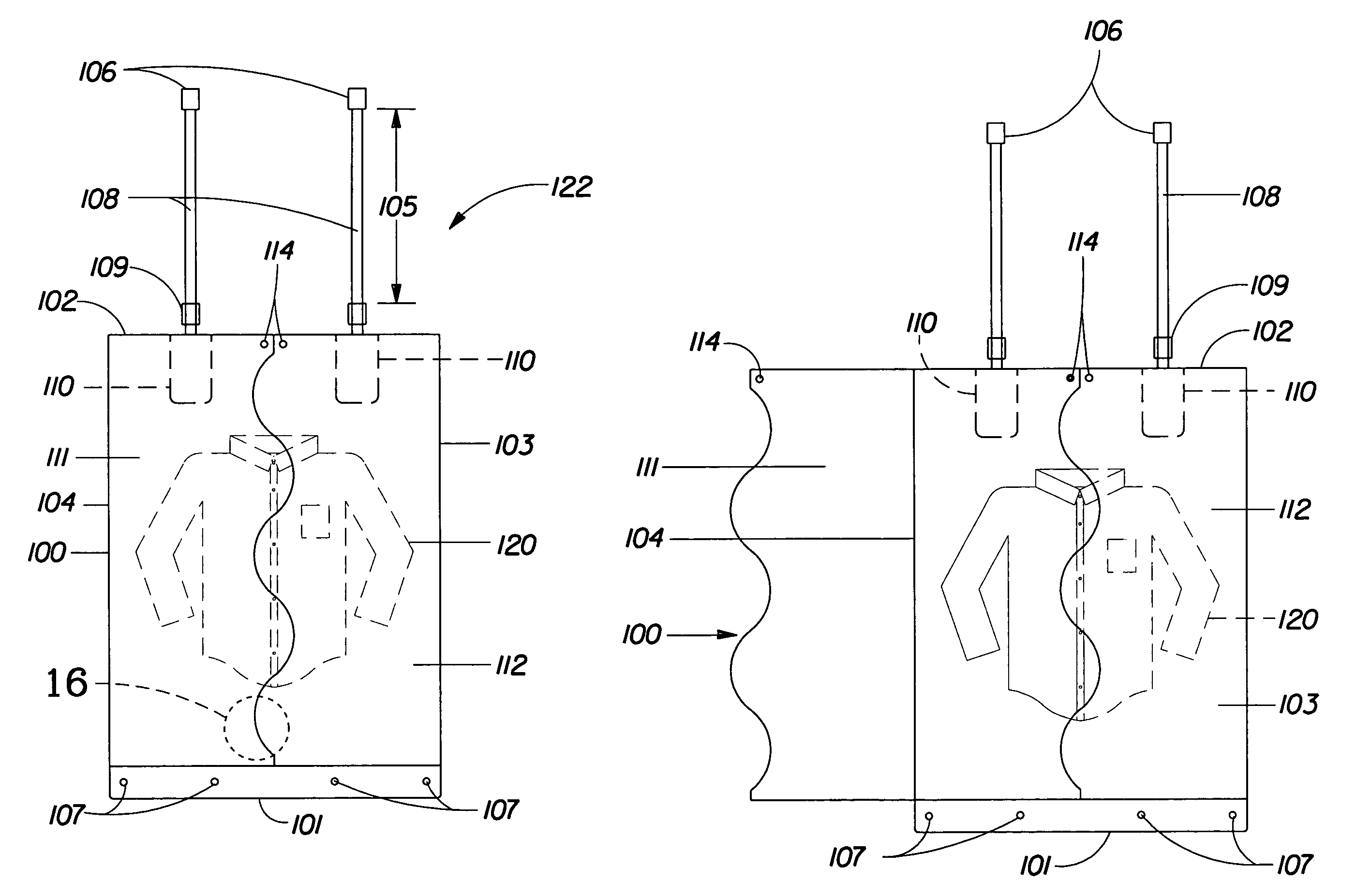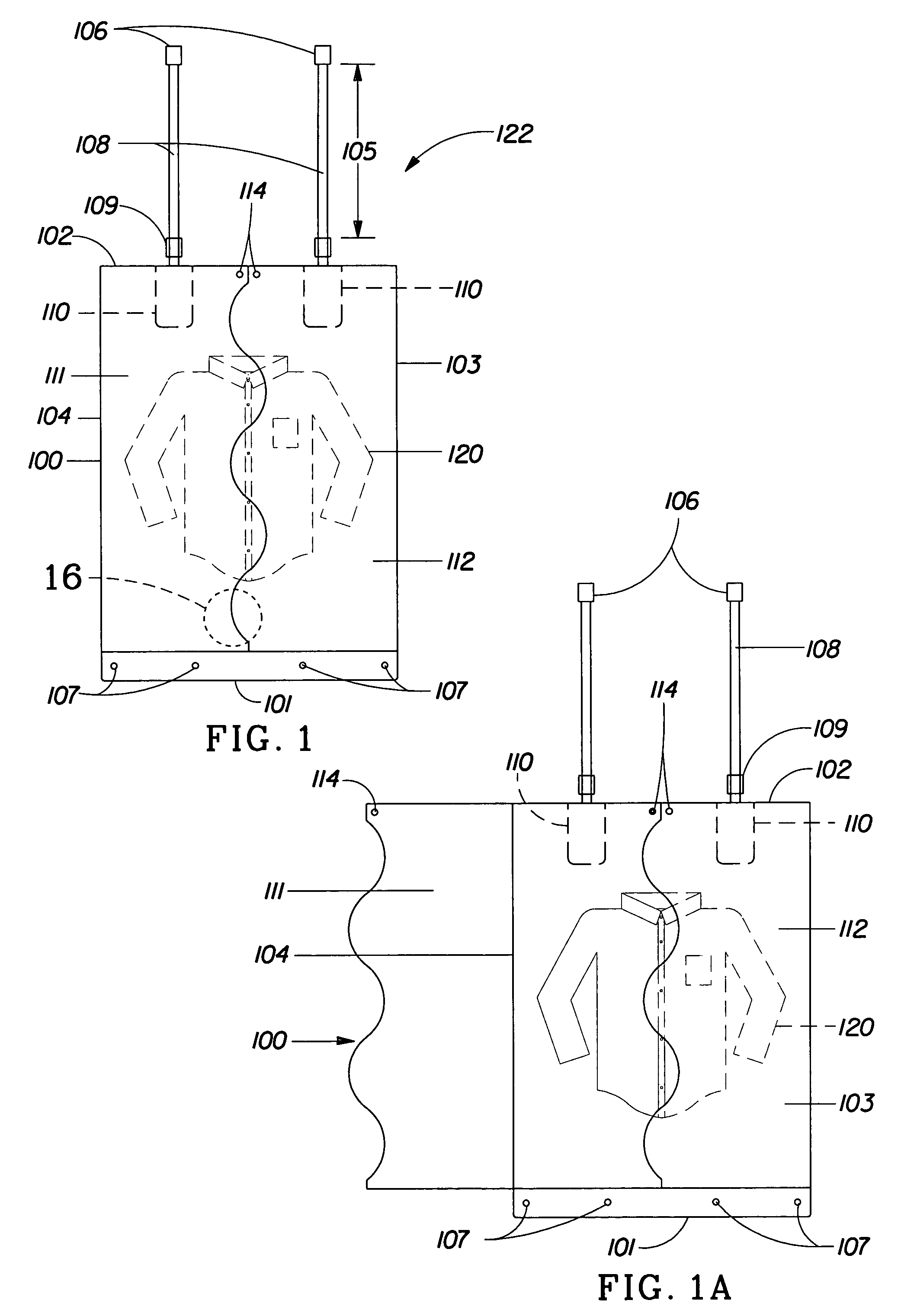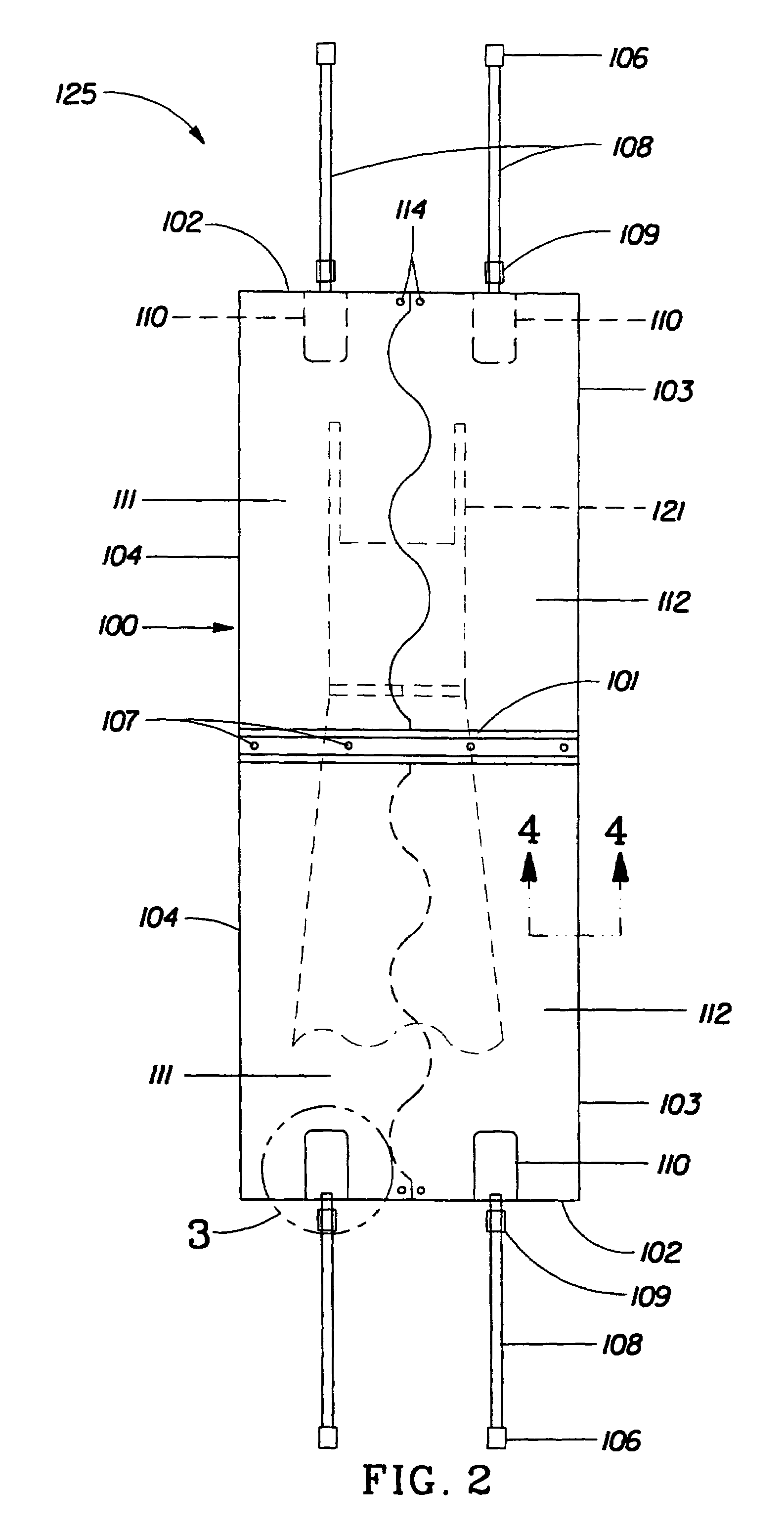Methods for laundering delicate garments in a washing machine
a technology for delicate garments and washing machines, applied in the direction of detergent mixture preparation, flexible container closures, transportation and packaging, etc., can solve the problems of inconvenient and expensive, inconvenient and expensive drying cleaning process, and exposure of delicate and quite possibly expensive garments to dry cleaning processes of inconsistent quality and garment care, and achieves superior overall cleaning of garments. , the effect of convenient and inexpensive cleaning process
- Summary
- Abstract
- Description
- Claims
- Application Information
AI Technical Summary
Benefits of technology
Problems solved by technology
Method used
Image
Examples
process embodiments
[0156]The use of the devices, compositions and processes of this invention are described in more detail hereinafter. Such disclosure is by way of illustration and not limitation of the invention herein.
[0157]Although not necessary or essential to the present invention, it is preferable to use a pretreatment procedure to improve the effectiveness of removing stains from a stained area of the garment. This pretreatment procedure comprises applying a pretreatment composition to the stained area and contacting the stained area with the wash pretreatment applicator by applying a gentle brushing motion to distribute the pretreatment composition around the stained area of the garment. The pretreatment composition may or may not then be rinsed off the stained area with water. The liquid cleaning composition may function also as a pretreatment composition or a separately provided pretreatment composition may be used.
[0158]In more detail, the pretreatment process herein can be conducted in th...
example 1
[0173]Examples of a (1) preferred liquid laundry composition which may be used both in the pretreatment process and added as a detergent into the washing machine and (2) a rinse cycle conditioner to be added during the rinse cycle. The compositions are used in a manner described after the detailed formulations.
[0174]
INGREDIENTwt %Liquid Cleaning CompositionAnd Wash Pretreatment CompositionNonionic Surfactant0.50N-Cocoyl N-Methyl Glucamine1.60Anionic Surfactant16.00Amine Cosurfactant0.40Citric Acid2.50Fatty Acids (12–16)2.00Ethanol2.59Monoethanol amine0.75Sodium Formate0.062Propanediol5.08Tolulene Sulfonate0.36Borax Premix2.50Sodium Hydroxide2.62Fabric Care Agents2.70Enzymes0.15Balance (water, antifoaming agent, perfume, color stabilizers)61.67Rinse Cycle Conditioner2,2,4-trimethyl-1,3-pentanediol5.30Softener Active**35.00Neodol Surfactant 91-84.90MgCl21.75Pluronic Surfactant L351.00diethylenetriaminepenta-0.01(methylenephosphonic acidPerfumes and Dyes0.60WaterBalance(**softener acti...
PUM
| Property | Measurement | Unit |
|---|---|---|
| Density | aaaaa | aaaaa |
| Temperature | aaaaa | aaaaa |
| Pressure | aaaaa | aaaaa |
Abstract
Description
Claims
Application Information
 Login to View More
Login to View More - R&D
- Intellectual Property
- Life Sciences
- Materials
- Tech Scout
- Unparalleled Data Quality
- Higher Quality Content
- 60% Fewer Hallucinations
Browse by: Latest US Patents, China's latest patents, Technical Efficacy Thesaurus, Application Domain, Technology Topic, Popular Technical Reports.
© 2025 PatSnap. All rights reserved.Legal|Privacy policy|Modern Slavery Act Transparency Statement|Sitemap|About US| Contact US: help@patsnap.com



